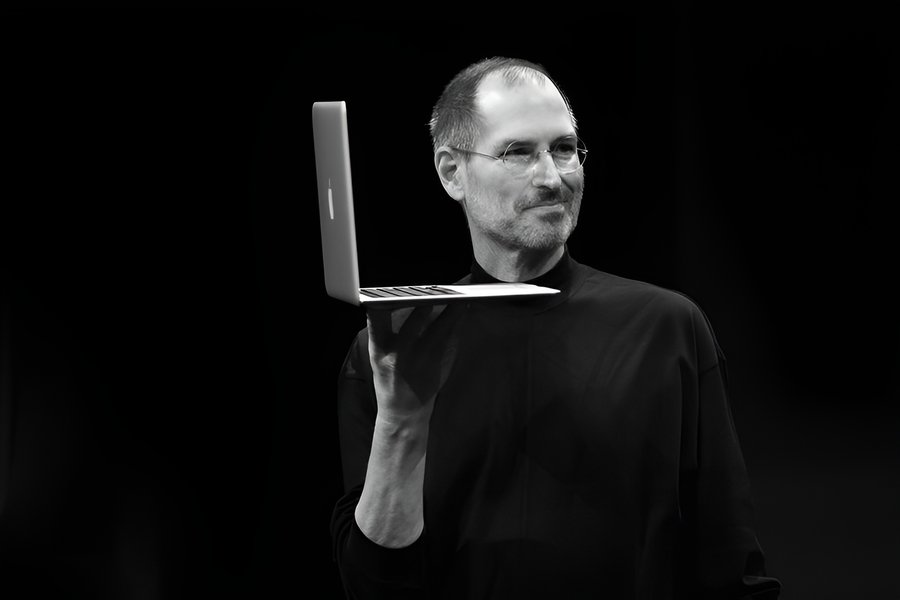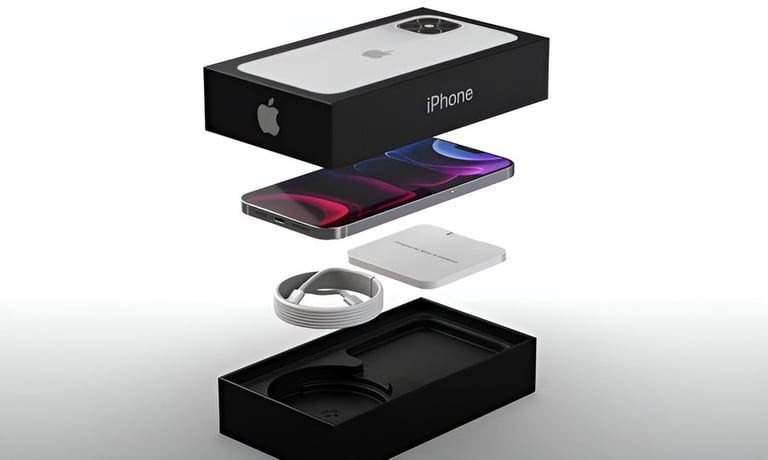The Unseen Power of Packaging: How Steve Jobs' Obsession with the Box Revolutionized Sales
Steve Jobs didn’t just want Apple products to be functional and attractive; he wanted them to stir emotion. And the first step in doing so was the packaging—the box. Learn from Jobs on how to design electronics packaging.
2/13/20256 min read


In 1995, Apple was struggling. Its products were often overshadowed by competitors like Microsoft, and the company seemed to be on the brink of irrelevance. Then, Steve Jobs returned to the company. While most would focus on improving the hardware or software of the products, Jobs saw something different: the experience didn’t start when you touched the product—it began long before that. It began the moment you saw the box.
This insight would change the way businesses thought about products, marketing, and customer experience forever. But what seemed like an obsessive waste of resources at the time is now seen as one of the most brilliant design principles in modern consumerism.
The "Box" That Changed Everything
Jobs’ return to Apple in 1995 marked the beginning of a new era for the company. As Apple faced stiff competition from Microsoft, Jobs didn’t just focus on product specs and features. Instead, he looked at the experience of the consumer from the very beginning—from the moment they first interacted with Apple products. For him, it wasn't just about what the product could do but how it made the user feel.
Steve Jobs didn’t just want Apple products to be functional and attractive; he wanted them to stir emotion. And the first step in doing so was the packaging—the box. Most CEOs would have considered it wasteful to invest millions into designing a box that would only be thrown away after a few minutes, but Jobs saw deeper meaning in it. He believed that the box was the "first moment of truth" for a customer. This was the moment when a consumer began to understand what the product was about—before they even touched it.
Jobs understood the power of anticipation. He realized that a premium product deserves premium packaging, and every element of the unboxing experience should be intentional. To achieve this, Jobs brought in Jony Ive, a talented industrial designer who would go on to become the Senior Vice President of Design at Apple. Ive’s minimalist approach, combined with Jobs' visionary ideas, would create a revolution not just in product design, but in the presentation of products as well.
The Thought Process Behind Apple's Packaging
Apple’s approach to packaging under Jobs and Ive was meticulous. The design principles they followed were exacting and innovative:
Perfect box edges: Apple insisted on achieving perfection in every detail, even something as seemingly trivial as the edges of the box. The smooth, precise edges were essential in ensuring a premium feel.
Layered product reveal: The sequence of how the product was revealed was as important as the product itself. Apple’s boxes were designed with multiple layers so that each component of the product was revealed at a specific moment, building anticipation and excitement.
Premium materials: Only the best materials were used in the packaging. The company didn’t skimp on quality, even though the box would eventually be discarded.
Precise opening experience: The process of opening the box was just as important as the product inside. The resistance when lifting the lid, the feel of the materials, the smoothness of the action—all these small details contributed to a luxurious, satisfying experience.
For the original iPhone, this obsession with packaging was taken to new heights. Every detail was considered: the texture and finish of the paper, the precise sequence of the unboxing process, the resistance of the lid, and how each component was revealed were all painstakingly designed. Each decision was about creating a moment of surprise and delight, a feeling that you were interacting with something special.
The Ripple Effect: How Apple's Packaging Changed the Industry
The impact of Jobs and Ive's design principles was profound. Apple’s unboxing experience became a cultural phenomenon. What was once a mundane, often overlooked part of product design became an event in itself. Soon, YouTube channels dedicated entirely to unboxing Apple products began to emerge. People were watching others open their iPhones and MacBooks as if it were a form of entertainment. This fascination with the unboxing process was unprecedented.
Competitors began to take notice. Microsoft, which had once laughed at Apple's obsession with packaging, eventually started investing more in the presentation of its products. Apple had set a new standard in consumer experience, and other companies had to follow suit. Packaging was no longer seen as an afterthought or wasteful expense; it was recognized as an integral part of the customer experience.
Even design schools around the world began analyzing Apple’s approach to packaging. It became a case study in how design could create an emotional connection between a brand and its customers. Apple didn’t just make products; they made experiences that their customers would remember long after the product was gone.
The "Box" as a Psychological Principle
What Jobs and Ive realized, and what many companies have since adopted, is that packaging isn’t just about holding a product. It’s about setting the tone for the entire customer experience. The unboxing moment is a psychological trigger—it primes the consumer to expect greatness, to feel like they’re getting something special, something worth their time and money.
This psychological principle is often referred to as "the first moment of truth." It’s the idea that the moment a customer interacts with a product—whether it's seeing the box on a shelf, opening the package, or using the product for the first time—is when their perception of the brand and the product is formed. If that moment is disappointing or underwhelming, it can sour the entire experience, no matter how good the product itself is.
Apple’s packaging elevated this moment, turning it into something memorable. They didn’t just want the customer to be impressed; they wanted them to feel like they were part of something exceptional. This approach fostered deep brand loyalty, as consumers began to associate the entire Apple experience with feelings of excitement, quality, and innovation.
Excellence in the Details: A Business Lesson
The lesson that can be drawn from Apple’s obsession with packaging is that excellence lies in the details. As Jobs himself said, "The back of the fence is just as important as the front." This is a powerful reminder for entrepreneurs and business owners everywhere. It’s easy to get caught up in the main product and forget about the smaller details that make up the whole experience.
Many businesses focus only on the product itself—its features, its specs, its performance—but what Jobs showed us is that the experience is much broader than that. The entire journey, from the first interaction with the brand to the final use of the product, is equally important. Great founders don’t just obsess over their products—they obsess over the entire experience. And sometimes, it’s the smallest details that make the biggest difference.
The packaging of a product may seem like a minor detail, but for Apple, it was an essential part of their overall strategy. They invested millions into it because they knew that when you create a seamless, thoughtful experience, it pays off in customer satisfaction and loyalty.
The Cost of Excellence
Apple’s commitment to packaging didn’t come cheap. The company invested millions in designing and producing the packaging for every new product. But it wasn’t wasteful. Jobs believed that excellence wasn’t expensive—it was just about paying attention to detail. And as Apple’s success shows, those details paid off. Packaging became an integral part of the brand’s identity, and customers began to expect that level of thoughtfulness in every aspect of their interaction with Apple products.
But it wasn’t just about spending money on design. It was about crafting an experience that resonated with customers on an emotional level. Jobs and Ive created a brand that people wanted to be a part of, and packaging played a huge role in making that connection.
Conclusion: What "Boxes" Are You Designing?
Steve Jobs and Jony Ive taught us that packaging is more than just a way to protect a product—it’s an opportunity to create a powerful emotional connection with customers. By obsessing over the details, Apple created an experience that was unforgettable and, ultimately, a key factor in its success.
As a business owner, what "boxes" are you designing in your business? Are you paying attention to the small, seemingly insignificant details that could make your product stand out? Remember, it’s not just about what you’re selling—it’s about how you’re selling it. Excellence isn’t expensive; it’s about attention to detail. Whether it’s your product, your customer service, or your marketing, it’s the little things that add up to make a big difference.
In the end, the difference between a good product and an insanely great one isn’t just in the product itself. It’s in the experience that surrounds it—and sometimes, that experience starts with the box.


